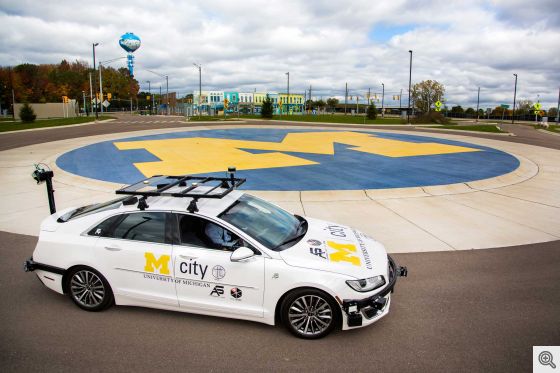The Ann Arbor-based University of Michigan today released the findings of a study analyzing the efficiency of self-driving vehicles. The study concluded that these vehicles have a net reduction in lifetime energy use.
Added weight, electricity demand, and aerodynamic drag of the cars’ sensors and computers are some of the challenges facing the efficiency of self-driving cars. However, when factored in with efficiencies associated with self-driving vehicles, the net result is a reduction in lifetime energy use and greenhouse gas emissions of up to 9 percent compared to the conventional vehicles examined in the study.
“This study explored the tradeoffs between the increased environmental impacts from adding autonomous vehicle equipment with the expected gains in driving efficiency,” says Gregory Keoleian, study co-author and director of the Center for Sustainable Systems at UM’s School for Environment and Sustainability. “Our findings highlight the need to focus on energy efficiency when designing autonomous vehicles so that the full environmental benefits of this emerging, transformative technology can be realized. We hope this work contributes to a more sustainable mobility ecosystem.”
The research was supported by grants from the Dearborn-based Ford Motor Co.
The study is an assessment of the lifetime contributions of the sensing and computing subsystsems in autonomous vehicles to energy use and associated greenhouse gas emissions. These vehicles often include multiple cameras, sonar, radar, LiDAT, a GPS navigations system, a computer, and support structures.
Two types of connected and automated vehicles (CAVs) were studied: those powered by internal combustion engines and battery-powered electric vehicles. Each vehicle type was paired with sensing and computer subsystems of three sizes to create six scenarios. Life-cycle assessment methodology was then used to estimate lifetime energy use and greenhouse gas emissions for each scenario from cradle to grave.
Autonomous vehicles with electric powertrains have lifetime greenhouse gas emissions that are 40 percent lower than vehicles powered by internal-combustion engines. This is related to the inefficiency that comes from producing electricity from fuel combustion and a sharper fuel-consumption increase when extra mass is added to a vehicle powered by an internal-combustion engine.
“We’ve shown in this paper that a battery-electric vehicle is a better platform for CAV components compared to the internal-combustion engine vehicle in terms of minimizing environmental impacts,” says Jim Gawron, study lead author and a graduate student at the UM School for Environment and Sustainability and at the Ross School of Business. The work is part of Gawron’s master’s thesis.
The authors found that the sensing and computing subsystems in connected and automated vehicles could increase a vehicle’s energy use and greenhouse gas emissions by 3 to 20 percent due to increases in power consumption, weight and aerodynamic drag.
But the operational benefits of autonomous vehicles, which include smoother, more efficient traffic flow, are expected to outweigh those increases in most cases.
Some other highlights of the study say:
- Wireless data transmissions used for onboard navigation maps are a significant contributor a CAV’s energy use and associated greenhouse gas emissions, with higher resolution maps making a much bigger impact.
- The added weight and power demand from the onboard computer produces significant impacts. For the medium-size sensing and computing subsystem that served as the baseline scenario in the study, the computer contributed 45 percent of the weight, consumed 80 percent of the power, and was responsible for 43 percent of the greenhouse gas emissions.
- Large, exterior-mounted CAB components can significantly increase aerodynamic drag and fuel consumption. Until these components are made smaller, they will have tangible impacts.
The vehicles examined were Level 4 connected and automated vehicles, which are vehicles that can operate with human input or oversight under select conditions. They were tested at UM’s Mcity, a public-private R&D initiative working toward the transformation to connected and automated mobility.
In addition to Keoleian and Gawron, the authors of the study are Robert De Kleine, Timothy Wallington and Hyung Chul Kim of Ford Motor Co.






